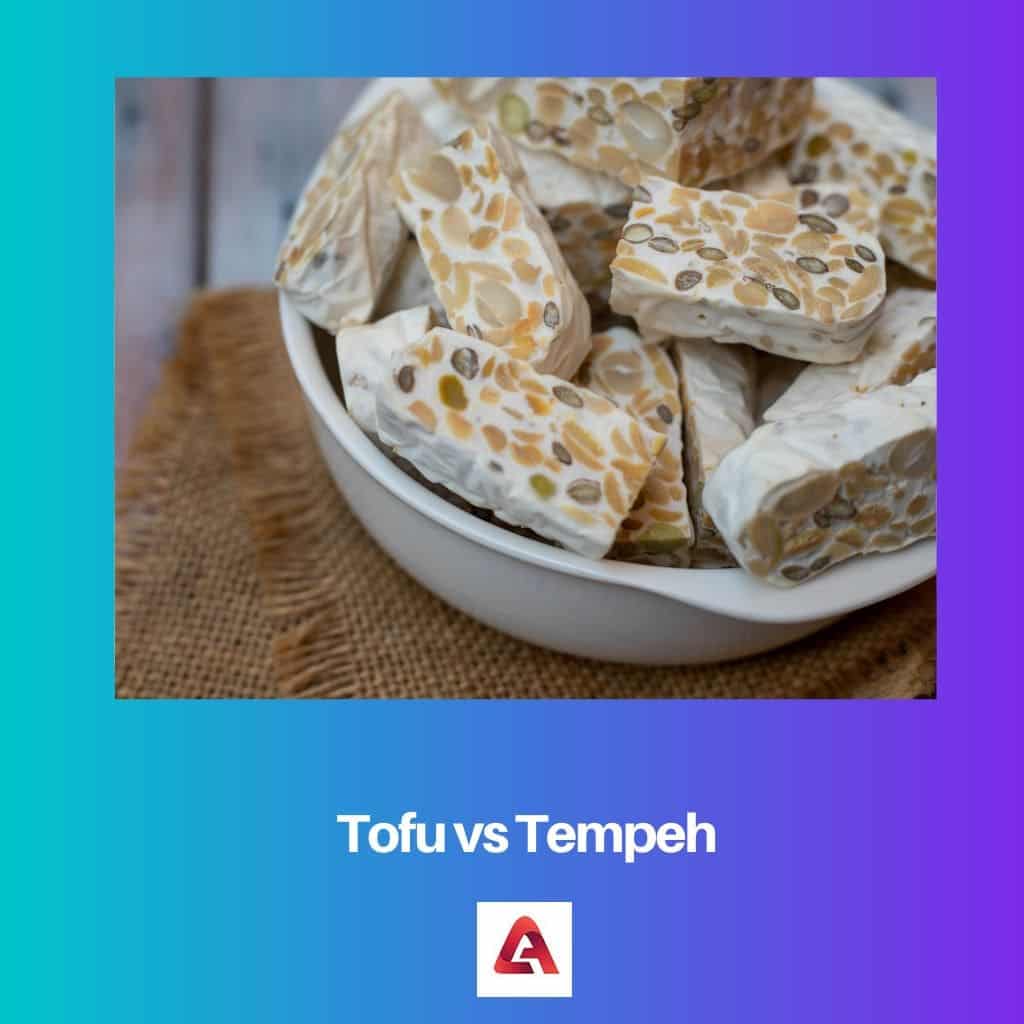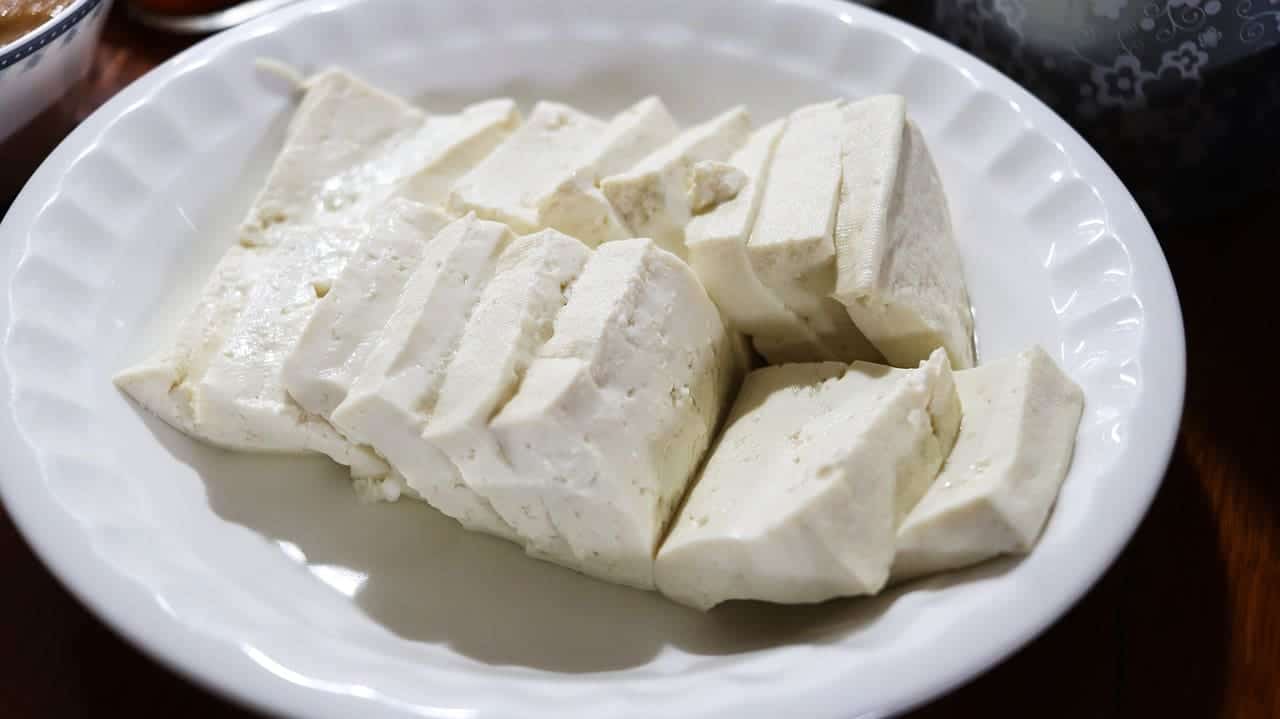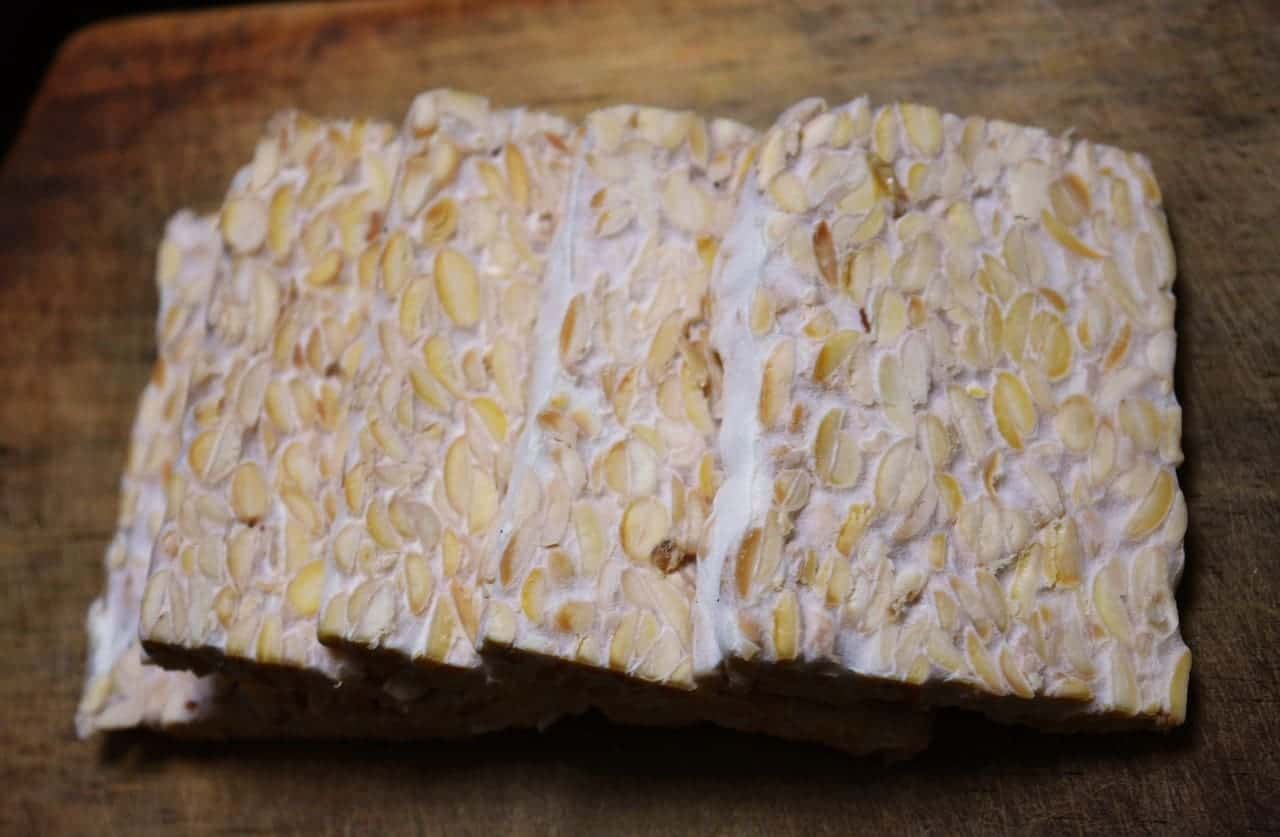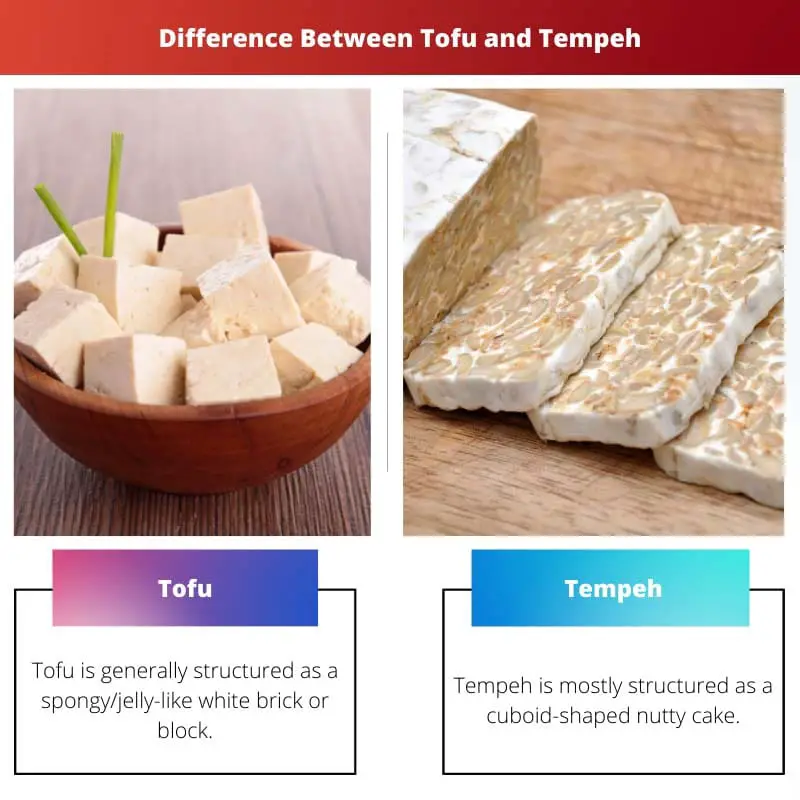Lately, the world has turned towards more of a healthy lifestyle than following a reckless diet. Being two of the best alt-meat options available, Tofu and Tempeh rule the world of vegan guts.
Tofu and Tempeh both track their source back to Soya. As demand for rich sources of plant-based protein is increasing every day, soon, the demand for Soya, in particular, will reach the sky.
Key Takeaways
- Tofu is made from coagulated soy milk and has a soft, smooth texture.
- Tempeh is made from fermented soybeans, offering a firm texture and a nutty flavor.
- Both are nutritious plant-based protein sources, but tempeh contains more fiber and is less processed than tofu.
Tofu vs Tempeh
Tofu is made by coagulating soy milk and pressing the resulting curds into blocks. Tempeh is made by fermenting cooked soybeans with a specific type of mould. Tofu is higher in calcium and lower in calories and fat than tempeh, while tempeh is higher in protein and fibre than tofu.

Tofu is a form of thick curd made from soybean. Generally given, the shape looks like a spongy white brick. Being a rich source of protein and low in calories, tofu is consumed as post-gym food.
Today it is consumed in almost every part of the world, but it dates back to its origin in China. Making tofu has three major steps, that is, first, extracting the soya milk, second, coagulating it, and then giving it the shape of blocks.
Tempeh is the cake of fermented soybeans. Being originally made in Indonesia by Javanese people, it is one of the famous cuisines available there.
A fungus called “Rhizopus oligosporus” is used in the fermentation of soybeans, which is ultimately made as tempeh. Tempeh is a rich source of protein. Because of its amazing taste, it is considered the best alternative for meat.
Comparison Table
| Parameters of Comparison | Tofu | Tempeh |
|---|---|---|
| Structure | Tofu is structured as a spongy/jelly-like white brick or block. | Tempeh is mostly structured as a cuboid-shaped nutty cake. |
| Origin | Tofu dates back its origin in China. | Tempeh was originally prepared by Javanese people as a cuisine in Indonesia. |
| Recipe | The first step towards making tofu is extracting soymilk, then coagulating it to make curd out of it, then molded into a block shape. | The first step towards making tempeh is, fermentation of soy seeds by rhizopus, then molded into a cake shape. |
| Rich in | Tofu is a rich source of protein, Iron, Calcium, Magnesium. which helps in lowering cholesterol. | Tempeh is a rich source of protein, dietary fiber, and vitamins. This helps in the digestion process. |
| Taste | Tofu is tasteless on its own, has a spongy thick texture. | Tempeh is the second meat, it has a nutty and crunchy taste. |
What is Tofu?
Tofu is a thick, spongy, block-shaped soya curd. A kind of cuisine which originated in China and is now eaten all over the world. It is the white block of protein, iron, calcium, and magnesium.
The term “tofu” comes from the Mandarin word “doufu” or the Japanese word “tofu”, which means curd made from beans.
Tofu comes from a plant of soybeans, thus considered as one of the best alt meats or sources of protein by vegans. You will observe dieticians and gym trainers suggesting tofu as post-gym food due to its nature of providing maximum protein in minimum calories.
Tofu is tasteless and eaten by air frying it or just by seasoning it with chillies and other spices. It is made by coagulating the soy milk up to the density at which it can be moulded into a block shape.
Tofu is also sold in the market in processed form, such as pickle, freezer, kori tofu, etc. It has a very versatile nature, which can fit it into any dish and make it more tasty and special.
For starters, as Tofu garlic soup or In the main course, as Tofu tacos and also in dessert, as Tofu banana chocolate dips. People use Tofu in every part of their meals.

What is Tempeh?
Tempeh is a form of fermented soybeans. Soybeans are soaked and cooked to ferment them and then mould into cake form. That means, through fungus, we break down the chemical substance of soybeans.
Rhizopus process this fermentation, also called a Tempeh starter, as it is responsible for starting the tempeh recipe.
While making it, one should always ensure that it’s fully cooked before moulding. Partially cooked tempeh can lead to zero benefits and can result in indigestion problems.
The word “Tempeh” comes from the Javanese word “tumpi”, which means a white-colored batter. Tempeh is considered as second meat, its taste majorly matches the nutty, crunchy taste of meat.
Next time you miss that chicken burger from your favourite burger shop, You can always go for Tempeh burgers instead.
With a similar taste to meat, tempeh also provides a rich source of protein like meat. Also, it is rich in dietary fibres, which your gut could use for maintaining healthy digestion.
Tempeh is also good in serving as a combination with other foods like Marinated Tempeh peanut is loved by many. You will observe Tempeh being served as Burgers, sandwiches too. Tempeh can be eaten as a spicy dish or a sweet dish.

Main Differences Between Tofu and Tempeh
- Tofu and Tempeh come from soybean but are differently prepared. Tofu is prepared as a curd by coagulating soya milk, whereas Tempeh is prepared by fermenting soybeans.
- The tofu was originally prepared in China, whereas Tempeh is a Javanese cuisine made in Indonesia.
- Tofu is structured as a White spongy block of thick curd, whereas Tempeh is a nutty cake of fermented soybeans, presented by wrapping it in banana leaves.
- Tofu tastes like nothing, it is tasteless and thus eaten by seasoning it with spices, whereas Tempeh tastes like nutty beans and is considered a second meat or vegetarian meat.
- Tofu and tempeh are both rich sources of protein, but Tofu also provides iron and magnesium, whereas Tempeh has a good number of dietary fibres in it. This means consuming tofu helps keep your gym diet in check, whereas Tempeh ensures your gut health.

- https://link.springer.com/article/10.1007/BF01088476
- https://iopscience.iop.org/article/10.1088/1755-1315/116/1/012026/meta

The explanations provided about the nutritional aspects and differences between tofu and tempeh are highly effective in showcasing the benefits of these plant-based protein sources. This is a helpful guide for those considering incorporating tofu and tempeh into their diet.
I appreciate the detailed and informative nature of this article. The information about the origin and nutritional content of tofu and tempeh was fascinating and enlightening.
I was surprised to learn about the different nutritional content and production process of both tofu and tempeh. It is great to know that plant-based protein sources are available that are so beneficial for our health!
The creativity of incorporating tofu in various dishes and the description of the Tempeh and its exquisite taste were fascinating. The comparisons made between the two options were very interesting.
I would like to add that the comparison table is a clear and useful way to understand the differences between tofu and tempeh. It’s good to know the origin of both products and how they are utilized in cooking.
This article provided a comprehensive comparison of tofu and tempeh. The explanation of their production process, taste, and nutritional value is very well-presented.